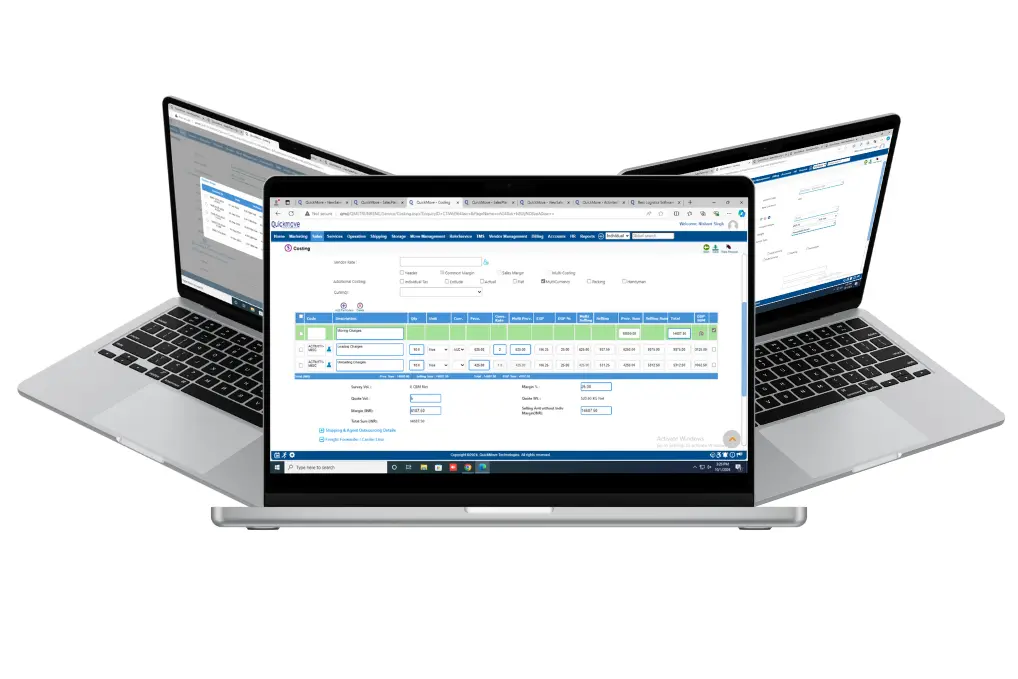In today’s fast-paced world, where enterprises need to do things quicker and smarter than ever before, warehouse management system is no longer a luxury—it is a necessity. Particularly in a rapidly growing nation like India, where retail, manufacturing, and e-commerce industries are on the boom, conventional methods of managing warehouse operations fail short. This is where an application of Cloud-Based Warehouse Management System (WMS) is used.
What is a Cloud-Based Warehouse Management System?
A Cloud-Based WMS is a computer program which allows businesses to track and manage warehouse activities such as tracking inventory, order picking, stock movement, and shipping—all in real time—over the internet. Instead of being on a single PC or local network, it’s installed on cloud servers, which means you can use it anywhere, anytime, from a laptop, tablet, or even a smartphone.
Why Indian Industries Need to Transition to Cloud-Based WMS?
1. India’s Growing Logistics and E-commerce Economy
India’s e-commerce industry is booming at a very fast rate, and with it the need for faster delivery and smart warehousing. With increasing numbers of businesses migrating to online sales and shipping pan-India, there is a demand for real-time visibility into inventory and warehouse operations.
2. Geographical Challenges
India is a huge nation with warehouses at times spread over some cities and states. It gets difficult to manage all of them with conventional systems. A cloud WMS gathers all your warehouses under one roof and simplifies multi-location management with affordability.
3. Affordability and Scalability
For most small and medium enterprises (SMBs), buying and hosting sophisticated hardware or local servers is not feasible economically. Cloud services are cheaper as you pay only for what you consume, and you do not have to bother about software updates and maintenance.
Benefits of Cloud-Based WMS
1. Real-Time Inventory Tracking
You always know what you have in inventory, don’t need anything more, and know the location of each item. This avoids stockouts and overstocks, which are costly and destroy customer confidence.
2. Remote Access and Control
You can access warehouse information and make on-the-go decisions no matter if you’re in Mumbai or having coffee in Goa. This convenience is highly beneficial for entrepreneurs and managers who frequently travel.
3. Enhanced Accuracy
Automation eliminates human mistake. With barcode scanning, electronic pick sheets, and alerting systems, order fulfillment errors are reduced. That means happier customers and reduced backorders.
4. Faster Order Fulfillment Speed
Cloud WMS enables optimized configurations of the warehouse, efficient picking routes, and quick order processing. In an era where next-day delivery is the norm, speed is everything—and this system does not disappoint.
5. Cost Savings
Because everything is monitored and optimized, wastage declines. You don’t require as many employees to perform manual checks, and you can run operations with fewer mistakes. And because there’s no need for extensive IT infrastructure, the initial investment is low.
6. Easy Integration
The majority of cloud WMS software are capable of integration with other applications like ERP (Enterprise Resource Planning), accounting, and e-commerce platforms like Shopify, Flipkart, or Amazon. This establishes a seamless process from order entry to delivery.
7. Data Security and Backup
Your data is preserved on secure cloud servers with regular backups. Even if your local machine crashes or gets stolen, your warehouse data is secure and ready.
Conclusion
India is headed for a digital future, and warehouse and supply chain logistics need to catch up. A cloud-based Warehouse Management System is not only a trend—it’s becoming an imperative for businesses that want to stay competitive, get there quickly, and grow cost-effectively.
Whether you have a small trading business in Pune, a retail chain business in Delhi, or a manufacturing facility in Chennai, a cloud WMS can revolutionize how you operate your warehouse. It’s affordable, simple to operate, and made for the future.




